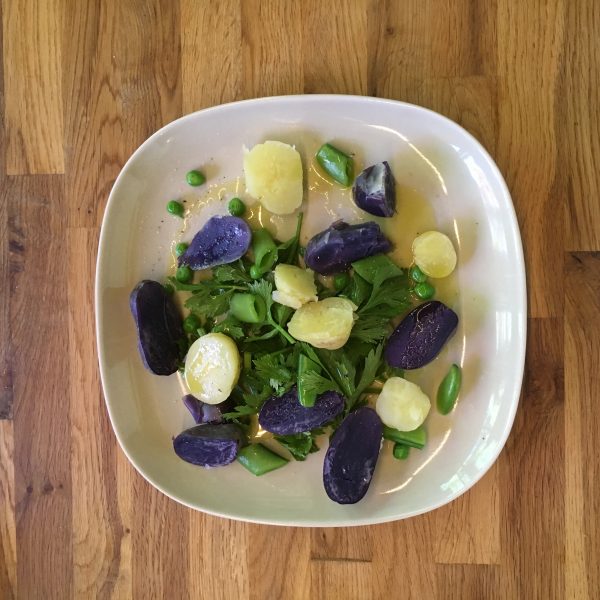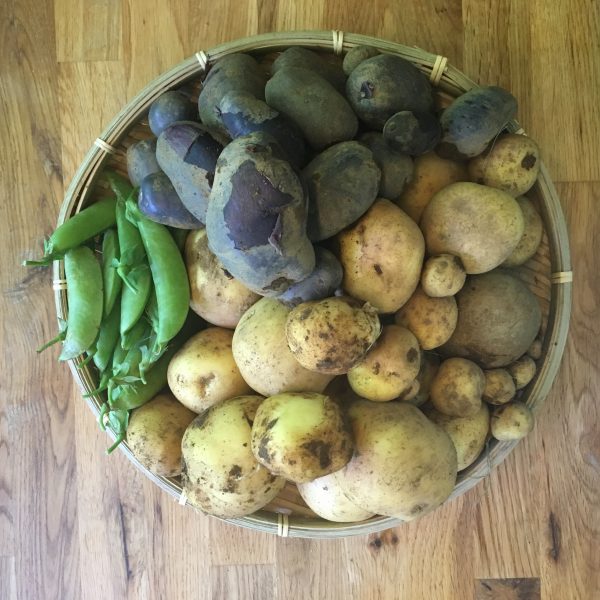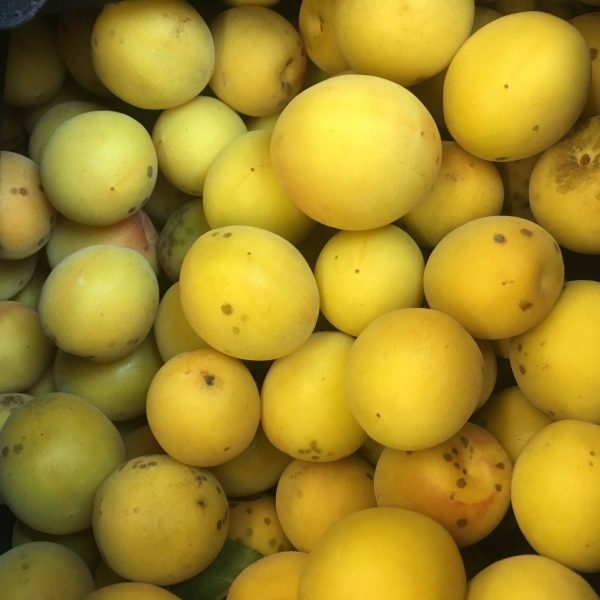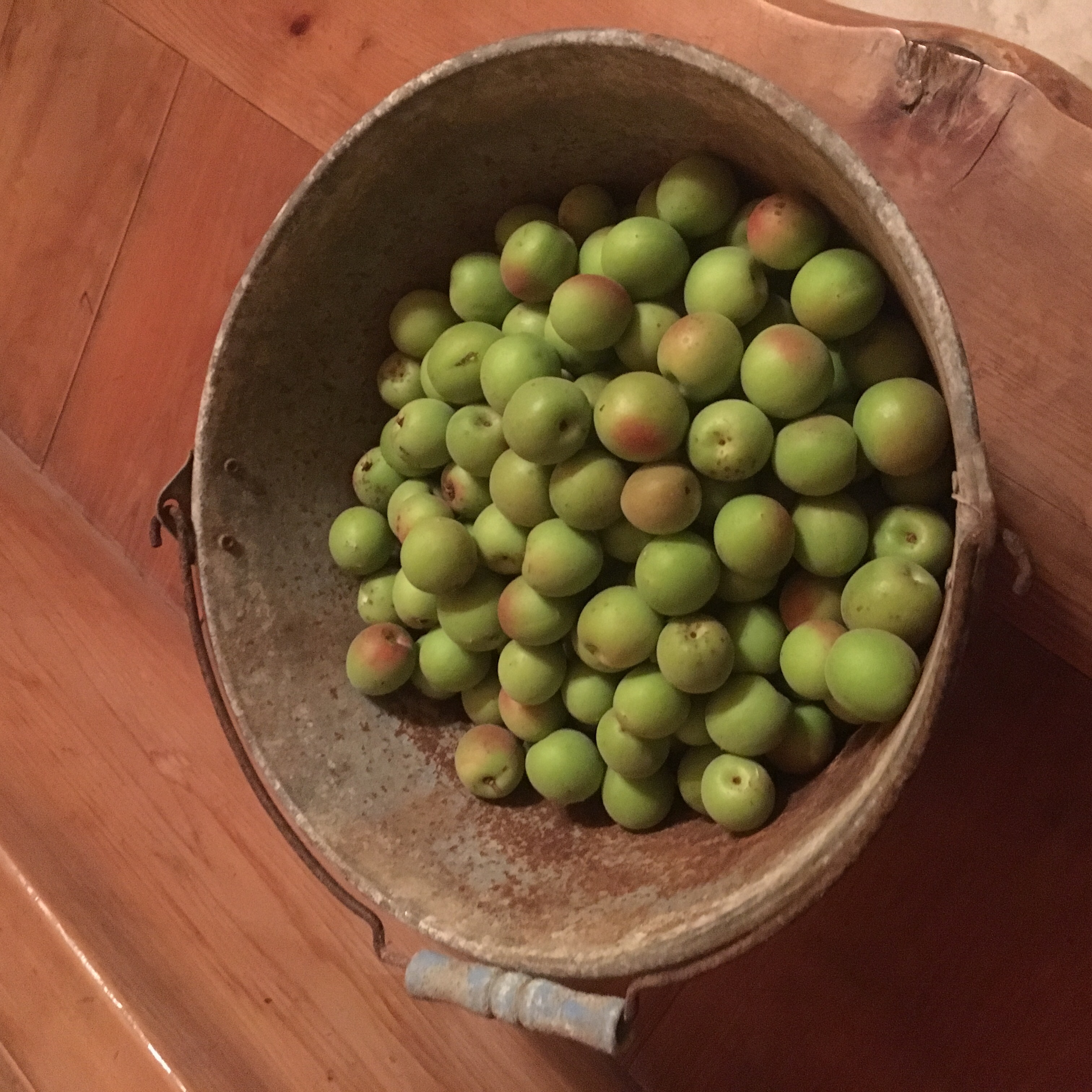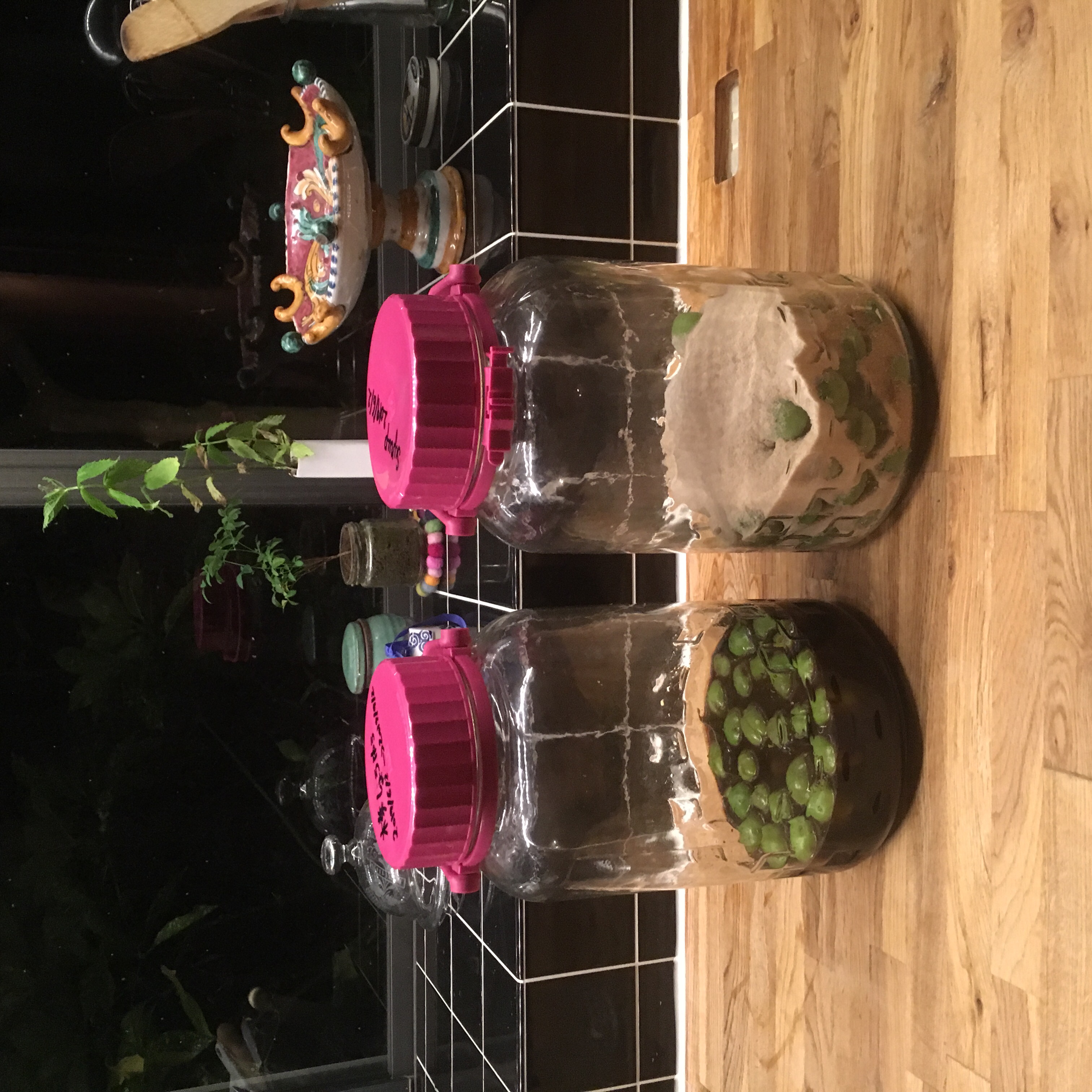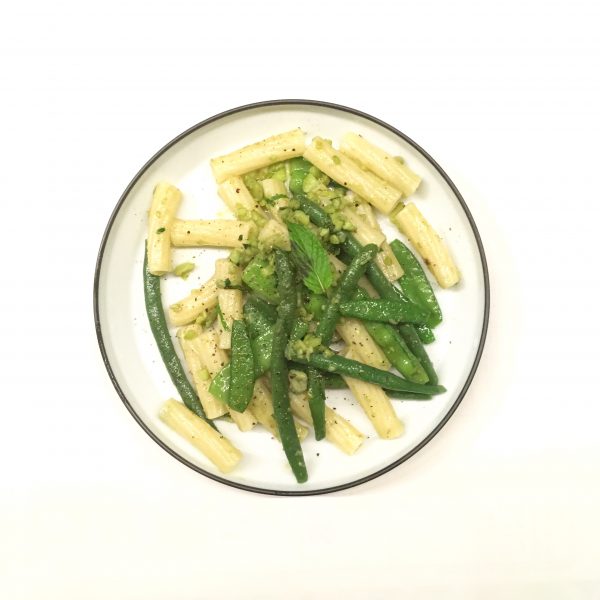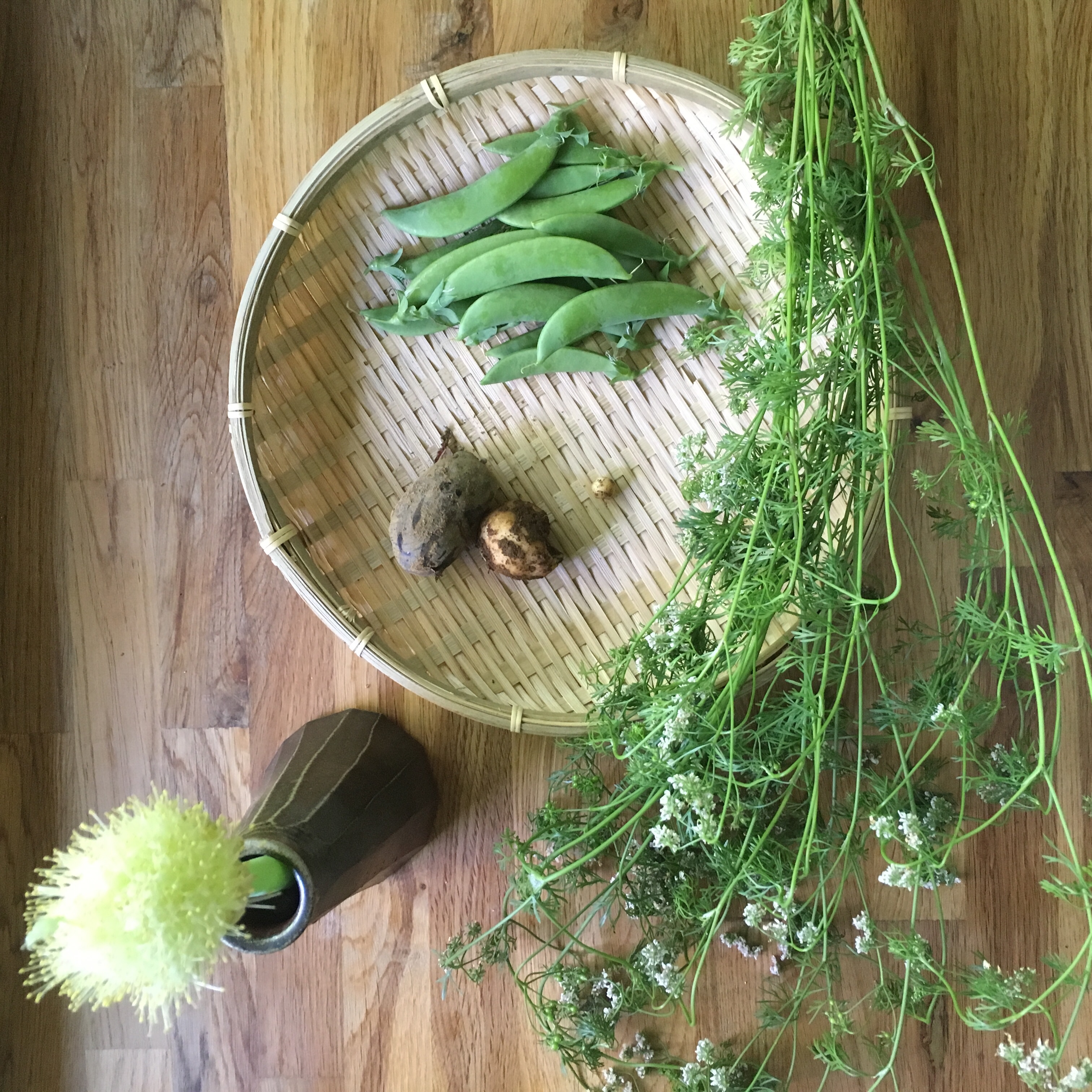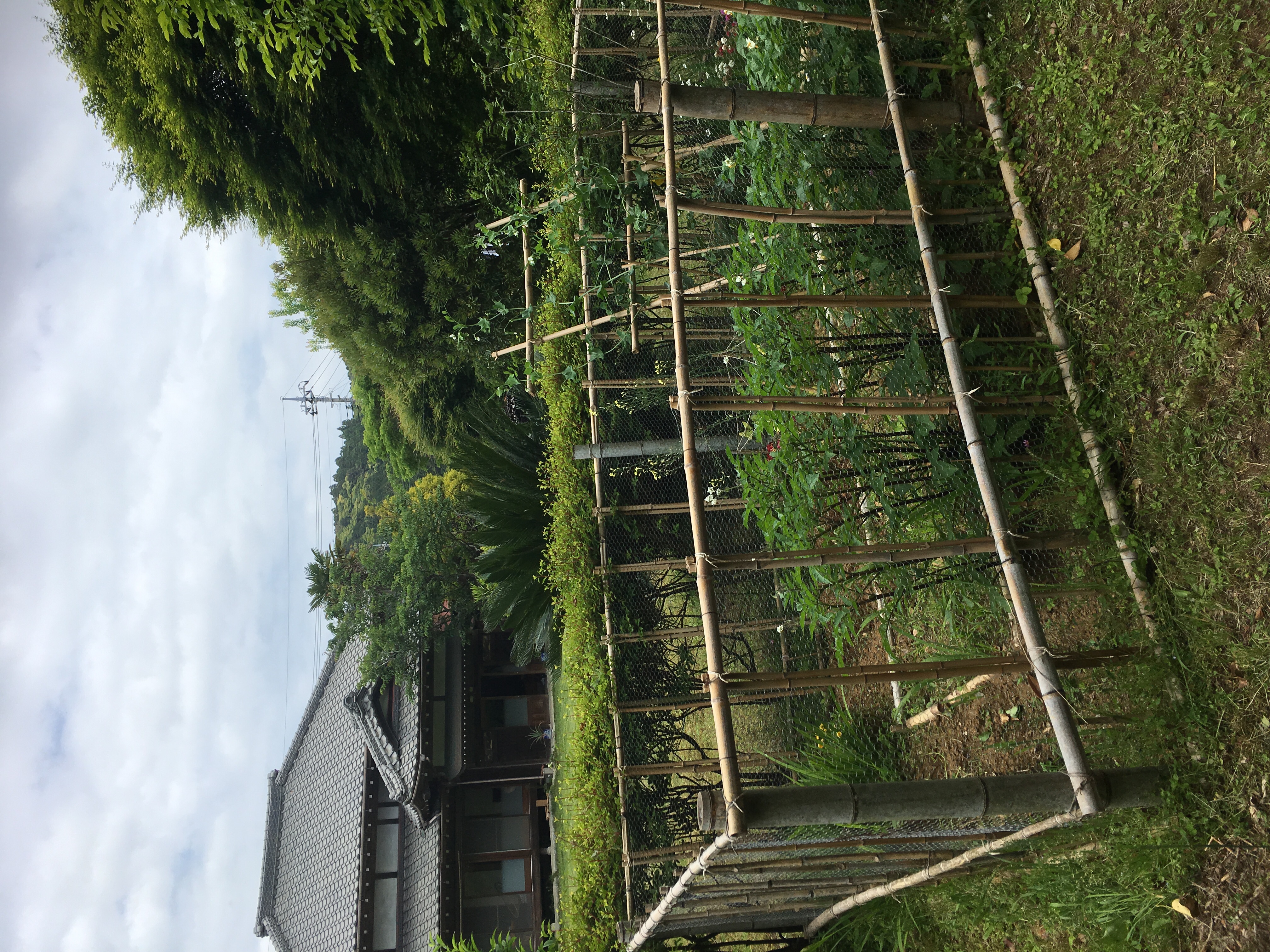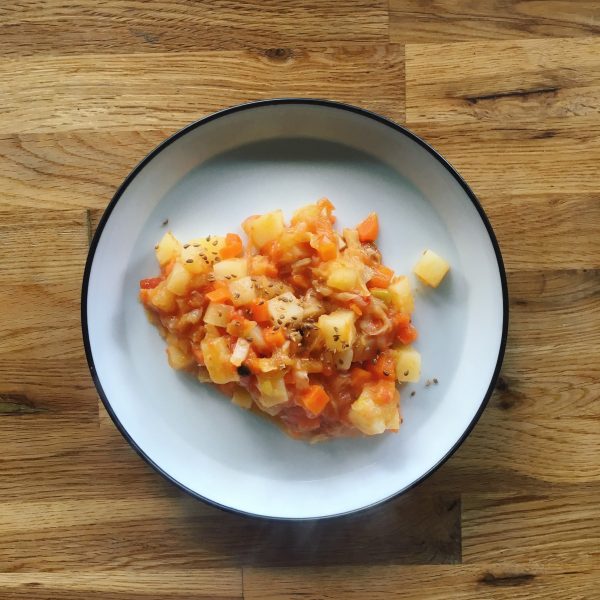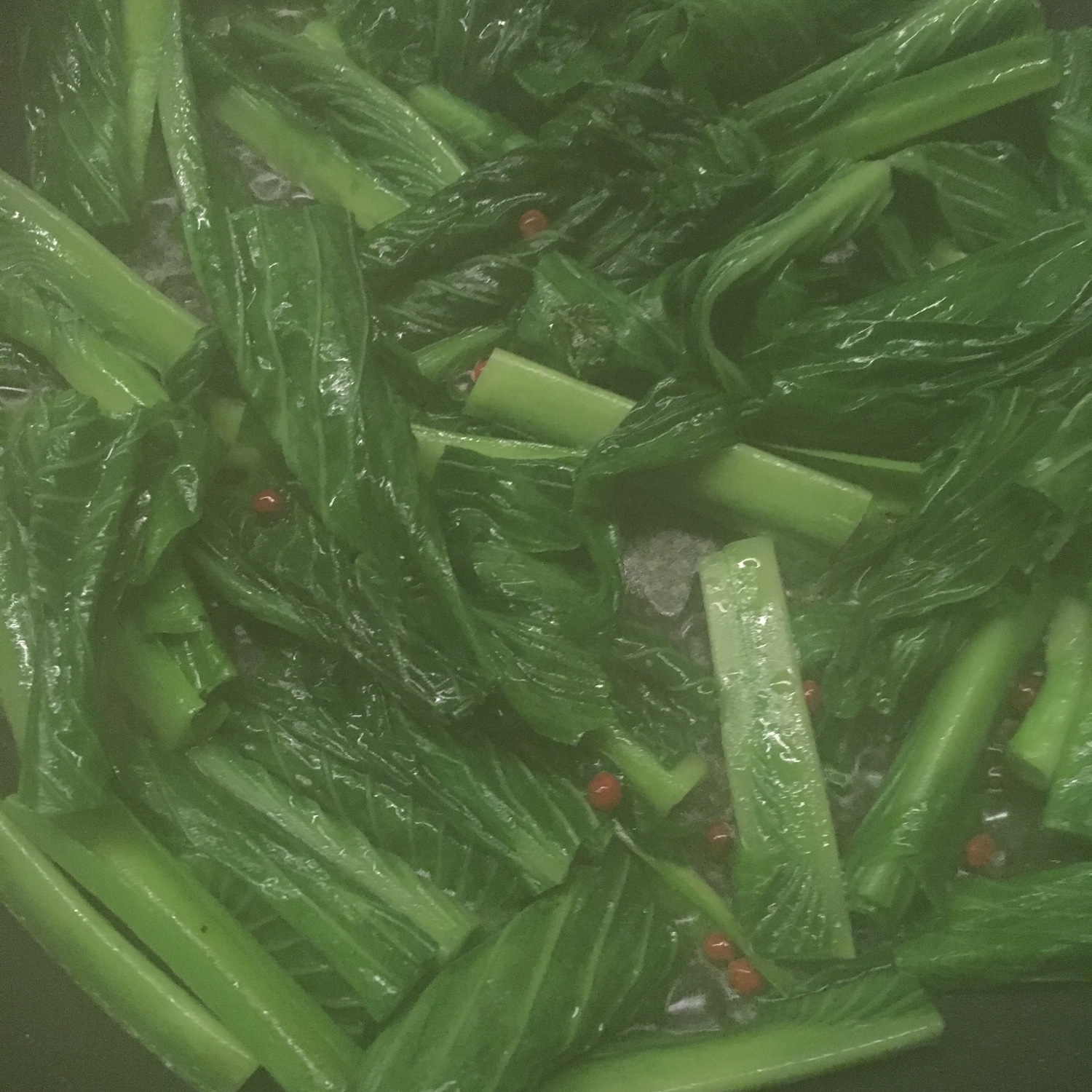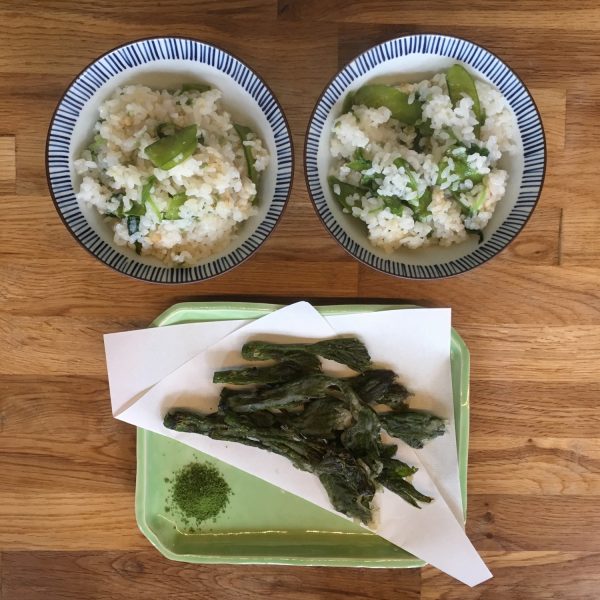The first recipe for this potatoes week is very simple. I wanted a preparation that would let us enjoy the difference between the two types of potatoes we grew and would be a full lunch. Well… I simply decided on a self grown plate with only staples from our kitchen garden. Well the choice is still quite limited but here is what I had: salad, celery branches, snap peas, overgrown snap peas that turned into green peas, basil, mint, rosemary, fennel leaves, parsley. The beats are struggling after a bird and a bug attack, the passion fruit is just having flowers…
So celery and peas appeared as the best options. Olive oil, salt and pepper as the best dressing.
I simply washed and steamed (or boiled) 4 small purple ratte and 4 small potatoes, blanched the peas and, and wash and cut the celery, then dressed the plates, topped with olive oil, salt and pepper, and lunch was ready.
Steaming the potatoes allows for a simple tasting where the flavors and texture are untouched, but don’t over cook them. As soon as they are cooked plunge them in cold water.
Have a good week!!
